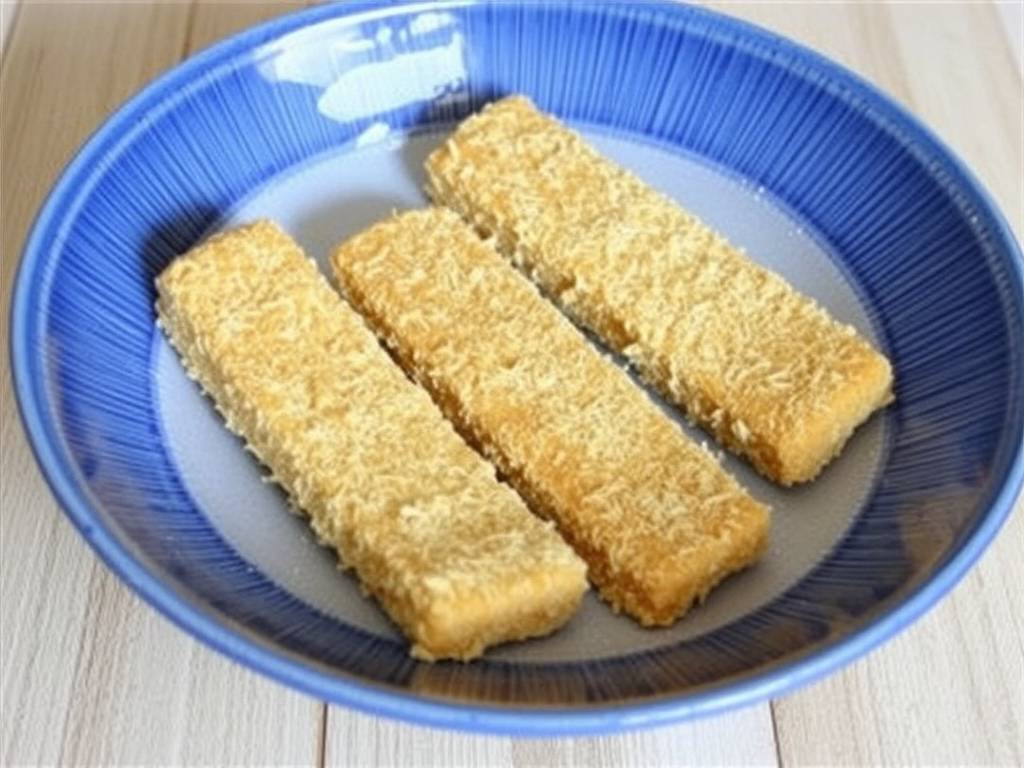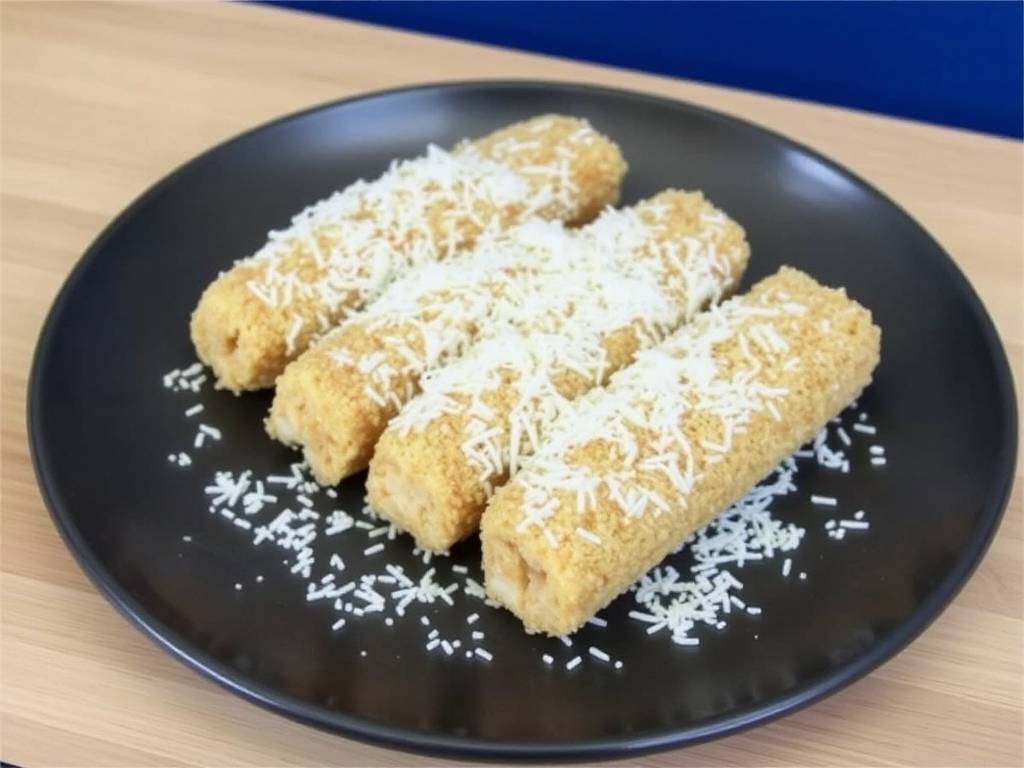Crispy Perfection: A Guide to Making Homemade Fish Sticks with Panko and Parmesan
The humble fish stick is a cornerstone of comfort food, evoking memories of childhood dinners and quick, satisfying meals. Yet, the frozen, cardboard-box variety often pales in comparison to what can be achieved in your own kitchen. By trading bland breadcrumbs for a dynamic duo of Japanese Panko and savory Parmesan cheese, you can elevate this simple dish into a culinary masterpiece that is crispy, flavorful, and surprisingly simple to prepare. This guide will walk you through the entire process, from selecting the perfect fish to mastering the art of the crispy coating, ensuring your homemade fish sticks are a guaranteed hit.
The journey to exceptional fish sticks begins with the star of the show: the fish itself. While you can use any firm white fish, some choices are superior. Cod is a classic for a reason—its mild flavor and large, flaky flakes provide the ideal texture. Haddock is another excellent option, offering a slightly sweeter taste and firm flesh that holds up beautifully during cooking. For a more sustainable choice, consider Alaskan pollock, which is often used in high-quality commercial products. Whichever fish you choose, ensure it is fresh, with a clean, oceanic smell and firm, translucent flesh. If using frozen fish, thaw it completely in the refrigerator overnight; this slow thawing prevents the fish from becoming watery, which is the enemy of a crisp crust.

The magic of this recipe lies in its coating. The standard, fine breadcrumb creates a dense, sometimes soggy barrier. Here, we introduce Panko. These Japanese-style breadcrumbs are made from crustless bread, resulting in larger, flakier, and airier crumbs. When fried or baked, Panko creates an incredibly light and shatteringly crisp crust that doesn’t become heavy or greasy. It’s the perfect textural counterpoint to the tender fish within.
To complement the Panko’s crunch, we add finely grated Parmesan cheese. Not the pre-shaken, powdery kind from a canister, but real Parmigiano-Reggiano or a good-quality Grana Padano, grated on the fine holes of a box grater. This cheese introduces a deep, salty, umami-rich flavor that permeates the crust, adding a sophisticated savory note that is absent from traditional recipes. The combination of the ethereal Panko and the robust Parmesan creates a coating that is far greater than the sum of its parts.
The assembly process is a simple three-step station, often called the "standard breading procedure." This method ensures the coating adheres perfectly, creating a seal that keeps the fish moist while the exterior browns. Let’s break it down.
Step 1: The Foundation - Preparing the Fish Start by patting your thawed fish fillets completely dry with paper towels. This is a non-negotiable step; any surface moisture will steam instead of allowing the coating to crisp. Using a sharp knife, cut the fish into uniform strips, about 1-inch wide and 3 to 4 inches long. Season the strips generously with salt and freshly ground black pepper. Remember, the fish itself needs seasoning, not just the coating.
Step 2: The Breading Station - A Trio of Preparations Set up three shallow dishes or plates in an assembly line.
- Dish 1: The Binder. This is typically all-purpose flour, seasoned with a pinch of salt, pepper, and perhaps a bit of paprika or garlic powder for an extra layer of flavor. The flour provides a dry base for the wet ingredient to cling to.
- Dish 2: The Glue. In a second dish, whisk together large eggs, perhaps with a tablespoon of water or milk to loosen it slightly. The egg acts as the crucial adhesive that binds the dry coating to the fish.
- Dish 3: The Star Coating. In the third dish, combine the Panko breadcrumbs and the finely grated Parmesan cheese. A good ratio to start with is one cup of Panko to a half-cup of Parmesan. Add some finely chopped fresh parsley or dill for a touch of color and freshness, and mix thoroughly.
Step 3: The Assembly Line - Coating the Fish Now, for the fun part. Working with one piece of fish at a time, dredge it in the seasoned flour, shaking off any excess. A light, even dusting is all you need. Next, dip the floured fish into the egg wash, ensuring it is fully coated. Let any excess egg drip back into the bowl. Finally, place the fish into the Panko-Parmesan mixture. Gently press the coating onto all sides to ensure an even, generous layer. Place the finished fish stick on a wire rack or a parchment-lined baking sheet. This resting period allows the coating to set, which helps prevent it from falling off during cooking.
Now, you have a choice: to bake or to pan-fry? Both methods yield delicious results, but with different characteristics.
The Baking Method: A Lighter, Hands-Off Approach Baking is a fantastic, less messy way to achieve a crispy result. Preheat your oven to a high temperature, around 425°F (220°C). Place a wire rack on a baking sheet and lightly grease it. Arranging the fish sticks on a rack ensures hot air circulates around them, crisping every surface evenly, unlike placing them directly on a sheet where the bottom can steam. For an extra-crispy finish, lightly spray or brush the coated fish sticks with a neutral oil like avocado or canola oil before they go into the oven. Bake for 12-15 minutes, flipping halfway through, until the coating is golden brown and the fish is opaque and flakes easily with a fork.
The Pan-Frying Method: Ultimate Crispiness For the absolute crispiest, most decadent crust, pan-frying is the way to go. Choose a heavy-bottomed skillet, like cast iron or stainless steel, and add a generous layer of a high-smoke-point oil, such as canola, vegetable, or avocado oil, to a depth of about ¼ inch. Heat the oil over medium-high heat until it shimmers. To test if it's ready, drop a small Panko crumb into the oil; if it sizzles immediately, you're good to go. Carefully add the fish sticks in a single layer, without crowding the pan (work in batches if necessary). Fry for 2-3 minutes per side, until deeply golden brown and crispy. Transfer the cooked fish sticks to a wire rack set over a paper towel-lined plate to drain any excess oil. This method is faster than baking and delivers an unbeatable texture.
No fish stick is complete without dipping sauces. While ketchup is a classic, this gourmet version deserves accompaniments that match its sophistication. A simple Lemon-Herb Aioli made by mixing mayonnaise with minced garlic, lemon zest, lemon juice, and fresh chopped dill or chives is a perfect pairing. The creaminess and acidity cut through the richness beautifully. A Tartar Sauce is another natural fit; elevate a store-bought version by adding capers, fresh dill, and a squeeze of lemon juice. For a brighter, lighter option, a Greek Yogurt Dip with cucumber, mint, and a hint of garlic offers a refreshing contrast.
Serving your homemade fish sticks is part of the joy. They can be the centerpiece of a casual dinner, served alongside crispy oven-baked fries, mushy peas, or a simple green salad with a sharp vinaigrette to balance the dish's richness. They also make fantastic finger food for parties or a fun, interactive meal for families. Let everyone build their own plate and choose their favorite dips.

In conclusion, making fish sticks from scratch with Panko and Parmesan is more than just a cooking project; it’s a revelation. It demonstrates how a few quality ingredients and a simple, mindful technique can transform a familiar staple into something extraordinary. The light, crispy texture of the Panko, combined with the salty, savory punch of the Parmesan, creates a coating that is irresistibly delicious, while the tender, flaky fish inside remains perfectly moist. So, bid farewell to the freezer aisle and embrace the satisfaction of creating a batch of golden, crispy, homemade fish sticks that are sure to become a new family favorite.






发表评论